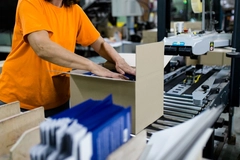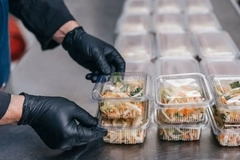Tastefully packaged - food packaging by SIM Combibloc

In 1986, SIG Combibloc began to develop the method that had so amply proven its worth with milk and juices – aseptic filling – into a success story for other foodstuffs as well: With the first carton in which soups with lumpy pieces up to nine millimetres in size were aseptically packed, the packaging of food-products such as soups and sauces experienced a small revolution.
In 1986, SIG Combibloc began to develop the method that had so amply proven its worth with milk and juices – aseptic filling – into a success story for other foodstuffs as well: With the first carton in which soups with lumpy pieces up to nine millimetres in size were aseptically packed, the packaging of food-products such as soups and sauces experienced a small revolution. In the same year, tomato products appeared in combibloc cartons. In 1987, the first cooking sauces were aseptically packed. The recipe is simple: Whereas in conventional sterilisation the vessel and contents are heated together, the combibloc system applies a separate solution: Tomato pieces, soups, sauces and even baby food are freed of micro-organisms through ultra-high temperature processing. The duration of heating in this is so short that all constituents physiologically important to nutrition are retained, as are colour, aroma and taste. Above all, however, the product is not boiled down to a mushy consistency, but instead keeps its natural state. Pieces up to 15 millimetres in size, and occasionally even up to 50 millimetres (e.g. soya beans or onions), can thus be processed in a way that is gentle on the product. Only then is the product placed in the sterilely blown-out carton, and the joint sealed above the product. This is only possible with the Combibloc shell system, because this prevents any pieces of foodstuff from getting into the joints of the carton.











